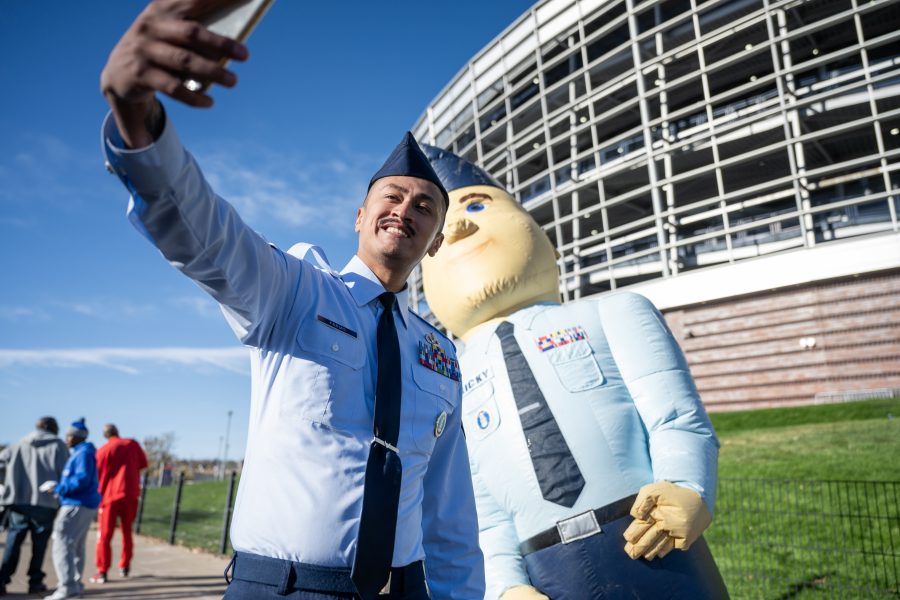The Department of the Air Force is targeting a larger group of Americans as it tries to improve its recruiting, the DAF’s top civilian in charge of personnel said Dec. 13—and the Air Force thinks it may be on track to meet its target next year.
“I can say we are cautiously optimistic that we will achieve Active-Duty Air Force and Space Force enlisted accession goals” in fiscal 2024, assistant secretary of the Air Force for manpower and reserve affairs Alex Wagner said during a Dec. 13 Congressional hearing.
Military recruiting has been lagging over the past few years, a widely acknowledged and persistent issue—only the Marine Corps and Space Force met their fiscal 2023 goals. In written testimony to the House Armed Services subcommittee on personnel, Wagner said the regular Air Force missed its recruiting goal by just under 11 percent for fiscal 2023.
“Our recruiting is trying to reach the broadest swath of the American people possible,” said Wagner. Testifying alongside Pentagon and fellow service personnel chiefs, he pushed back against some lawmakers’ assertions that today’s military is overly political.
Such concerns were highlighted during Sen. Tommy Tuberville’s recent hold on the nominations of hundreds of military officers, in protest of the DOD’s reproductive health policies. The standoff, which ended earlier this month, led to bitter recriminations from both sides of the aisle, and some Republican members of the subcommittee argued during the hearing that the military is too focused on social issues, scaring off potential recruits.
Wagner and other officials, on the other hand, cited a lack of familiarity with the U.S. military as the most pressing recruiting issue and one that can lead to possibly inaccurate perceptions of military service and, therefore, a deceased propensity to serve.
“This, combined with historically low unemployment, strong private sector wage growth, concerns about the risks of military service, COVID’s impact on school access all has turned into a perfect storm—creating the most challenging recruiting environment for our high-tech service since the height of the dot-com boom, nearly a quarter of a century ago,” Wagner argued.
Air Force Recruiting Service boss Brig. Gen. Christopher Amrhein previously noted several statistics at AFA’s Air, Space & Cyber Conference in September showing that lack of familiarity:
- Nine out of 10 American adults cannot name all five branches of the military nowadays
- Only 23 percent of American youth are eligible for enlistment in the military, and less than half of the pool express interest in joining
- Among the approximately 20 million Americans aged 17 to 21, only about 370,000 meet the eligibility criteria, possess the academic qualifications, and show interest in pursuing a career in the Air or Space Force.
“Lack of familiarity is the most important thing,” Wagner said. “What’s important to realize is that once people become familiar, they want to join, they understand the benefits of service, they understand the opportunities—whether they be educational, financial—they understand the community, being part of a team.”
The service has made a number of reforms as the Barriers to Service Cross-Functional Team, led by then-Vice Chief of Staff Gen. David W. Allvin, set out to “look under the hood.” The service no longer permanently prohibits recruits who test positive for THC, changed body composition standards, relaxed hand and neck tattoo policies, slightly raised the age limit for recruits, and is working on preventing recruits from losing interest in joining up as they await adjudication of medical waivers—reforms that added some 2,900 recruits that would otherwise have been turned away, Wagner stated.
For example, the new body composition standards resulted in more than 1,400 accessions across the DAF among individuals who previously may not have been allowed in, while only one of those newly eligible recruits failed to pass their physical fitness test, Wagner said in his written testimony.
“What we have done is simply expand the opportunity for qualified individuals to join our ranks,” Wagner said.
Wagner and other Air Force officials have stressed they are not lowering standards to improve recruiting, but rather removing barriers to service that no longer made practical sense, given today’s low unemployment rate and general reluctance to join the military.
Low unemployment and private sector wage growth over the past three years correlated with a decreased propensity to serve, Wagner noted in his testimony. Private sector employment has also become more flexible during the COVID-19 pandemic. Ultimately, as Wagner and other officials noted, while uniformed service is unique, it is not immune to trends in the labor market.
“Today’s youth must view us as an employer of choice,” Wagner said. To that end, the DAF is expanding recruiting advertising on streaming services and gaming platforms that younger people use, he said.

